The procession and parade organised by the authorities presented a level of splendour never before seen. However, the return of Napoleon was not a simple matter of patriotism. The political intent is one that has to be examined closely in order to understand how the French population celebrated their emperor’s return...
Louis Philippe, the Orléans king, was in power at the time of the Retour des Cendres. This was not the first time attempts had been made to return his mortal remains to France. When Napoleon died, an appeal was immediately made for the return of his body. Contrary to popular belief at the time, it was not the English who were preventing the return of his remains. Indeed the English government had made it clear to their French equivalents that « le gouvernement anglais ne se regardait que comme le dépositaire des cendres de l’Empereur et qu’il le rendrait à la France dès que le gouvernement français lui en témoignerait le désir ». But in 1821, the government of Louis XVIII was little disposed to bringing the Emperor’s mortal remains back. Louis did not want Bonapartist sentiments to return to the surface, especially with the royalists in power and the potential for a coup d’état. When Louis-Philippe ascended to the throne a petition was presented to the Chambre des députés in an appeal for the return of Napoleon. Although Heulard de Montigny “considered the reign of Napoleon to be the most brilliant time for France”, he failed to convince any of his colleagues. Throughout the 1820s and 1830s other attempts failed.
So why did Napoleon make it back after twenty years? The reasoning behind Louis Philippe’s decision to bring Napoleon’s body back to France, instead of leaving it in poetic isolation on St Helena, is complex. The king was heavily influenced in his decision by his prime minister at the time: Adolphe Thiers. Thiers, along with Guizot, used the return of Napoleon’s remains as part of a deliberate political design, a decidedly risky strategy to take. Certainly many French people felt very passionate about Napoleon and wanted his return, but there were also many who were politically and ideologically opposed to the emperor. However, the government felt that the July monarchy was strong enough to recognise the glories of its ideological adversaries and to place them in their ‘juste milieu’, in doing so synthesising all aspects of the past and the social divisions it had witnessed. Unity could be achieved by remembering rather than forgetting the past, and Napoleon was a major part of France’s heritage.
Queen Marie-Amélie of the French, according to Philip Mansel in his book Paris Between Empires 1814 -1852, had her own opinion:
whatever people said in Napoleon’s favour, no man had caused more tears to be shed.
The idea was the plan of Theirs; the Queen’s husband, King Louis-Philippe, “hoped to appropriate the glory of the Napoleonic Empire.” This required what I would call a Great Erasing of (according to Mansel) “the horrors of the Napoleonic wars, the contempt and ‘general malediction’ felt for Napoleon in April 1814 and on his return from Waterloo in June 1815 –when he had been labeled Nero, Attila, and Genghis Khan…”
but what madness drives men to make heroes in this world of those who seem rather to have been sent by God to punish them?
Mansel answers the question, observing that the paper underestimated “the force of masochism in mass politics.”
The cult of Napoleon carried with it the seeds of the destruction of the monarchy.
At the time of Napoleon I’s funeral, the man considered the greatest orator in the French national assembly at the time, Alphonse de Lamartine, had denounced the burial in these words:
I am not of this Napoleonic religion, of this cult of force, which one has noticed for some time substituting itself in the spirit of the nation for the serious religion of liberty. I do not think it right thus unceasingly to deify war… as if peace which is the happiness and glory of the world could be the disgrace of nations… let us not seduce to such an extent the opinion of a people which understands far better what dazzles it than what serves it.
In the end, the King who tried to bask in Napoleon I’s glory, Louis-Philippe, put down a revolt in 1832, commemorated in the musical, Les Misérables, and was finally deposed by a revolution in 1848 which re-established the French Republic –led by a commission headed by Lamartine.
The nation is a slave who must be convinced he is seated on the throne.
It was of Louis Napoleon –Napoleon III– that Marx famously wrote (in The Eighteenth Brumaire of Louis Bonaparte),
Hegel remarks somewhere that all great world-historic facts and personages appear, so to speak, twice. He forgot to add: the first time as tragedy, the second time as farce.
Additional readings:
See Shannon Helin’s Napoleon’s Funeral in Paris in 1840.
Some interesting pictures and details and a review of the process from the exhumation of Napoleon I’s remains on St. Helena, in Retour des cendres.
(entry revised, March 29, 2022)
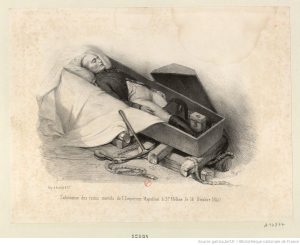
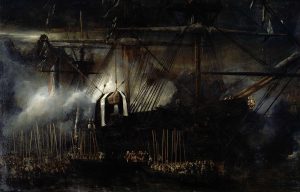
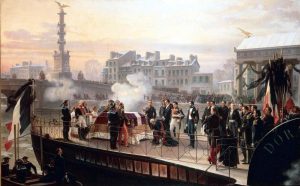
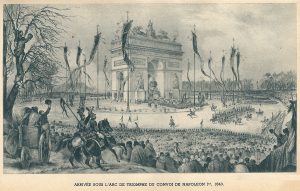
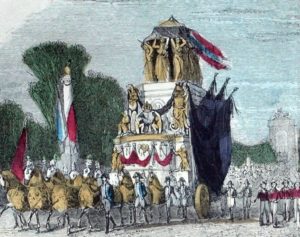

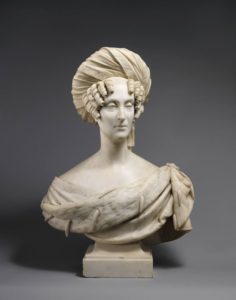
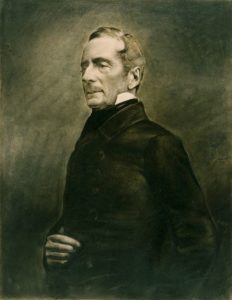
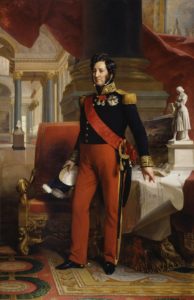
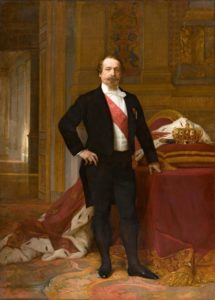
4 thoughts on “Unintended consequences of Napoleonic solutions”